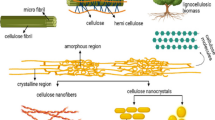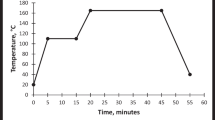Abstract
In this study, an insoluble nanosponge biopolymer composite was synthesized, using a combined process of amidation reaction, cross-linking polymerization, and sol-gel method to obtain a phosphorylated multiwalled carbon nanotube-cyclodextrin/silver-doped titania (pMWCNT-βCD/TiO2-Ag). This work mainly emphasized on the removal of lead (Pb2+) and cobalt (Co2+) metal ions from synthetic and real wastewater samples using the synthesized pMWCNT-βCD/TiO2-Ag as a biosorbent. The new material was characterized by Fourier transform infrared (FTIR) spectroscopy, zeta potential, Brunauer-Emmett-Teller (BET) method, and scanning electron microscopy (SEM). Adsorption studies for the model pollutants were performed in batch mode. The effect of the solution pH, adsorbent dosage and the presence of competiting ions were investigated. The isotherm, kinetic, thermodynamic, and regeneration studies were also undertaken. The ability of the new material to effectively remove Pb2+ and Co2+ from synthetic wastewater and mine effluent samples was tested. The maximum removal capacities achieved for the removal of Pb2+ and Co2+ from mine effluent sample were 35.86 and 7.812 mg/g, respectively.







Similar content being viewed by others
References
Ajitha P, Vijayalakshmi K, Saranya M et al (2017) Removal of toxic heavy metal lead (II) using chitosan oligosaccharide-graft-maleic anhydride/polyvinyl alcohol/silk fibroin composite. Int J Biol Macromol 104:1469–1482
Amin MT, Alazba AA, Manzoor U (2014) A review of removal of pollutants from water/wastewater using different types of nanomaterials. Adv Mater Sci Eng 2014:1–25
Badruddoza AZM, Shawon ZBZ, Tay WJD, Hidajat K, Uddin MS (2013) Fe3O4/cyclodextrin polymer nanocomposites for selective heavy metals removal from industrial wastewater. Carbohydr Polym 91:322–332
Barakat MA (2011) New trends in removing heavy metals from industrial wastewater. Arab J Chem 4:361–377
Bora T, Dutta J (2014) Applications of nanotechnology in wastewater treatment—a review. J Nanosci Nanotechnol 14:613–626
Chiban M, Soudani A, Sinan F, Persin M (2011) Single, binary and multi-component adsorption of some anions and heavy metals on environmentally friendly Carpobrotus edulis plant. Colloids Surf B Biointerfaces 82:267–276
Chibban M, Zerbet M, Carja G, Sinan F (2012) Application of low-cost adsorbents for arsenic removal: a review. J Environ Chem Ecotoxicol 4:91–102
Dada AO, Olalekan AP, Olatunya AM, DADA O (2012) Langmuir, Freundlich, Temkin and Dubinin–Radushkevich isotherms studies of equilibrium sorption of Zn2+ unto phosphoric acid modified rice husk. J Appl Chem 3:38–45
Fosso-kankeu E, Mittal H, Waanders F, Sinha S (2017) Thermodynamic properties and adsorption behaviour of hydrogel nanocomposites for cadmium removal from mine effluents. J Ind Eng Chem 48:151–161
Fu F, Wang Q (2011) Removal of heavy metal ions from wastewaters: a review. J Environ Manag 92:407–418
Ghomri F, Lahsini A, Laajeb A, Addaou A (2013) The removal of heavy metal ions (copper, zinc, nickel and cobalt) by natural benonite. Larhyss J:37–54
Gunatilake SK (2015) Methods of removing heavy metals from industrial wastewater. J Multidiscip Eng Sci Stud 1:12–18
Gupta N, Kushwaha AK, Chattopadhyaya MC (2012) Adsorptive removal of Pb2+, Co2+ and Ni2+ by hydroxyapatite/chitosan composite from aqueous solution. J Taiwan Inst Chem Eng 43:125–131
Gupta VK, Moradi O, Tyagi I, Agarwal S, Sadegh H, Shahryari-Ghoshekandi R, Makhlouf ASH, Goodarzi M, Garshasbi A (2016) Study on the removal of heavy metal ions from industry waste by carbon nanotubes: effect of the surface modification: a review. Crit Rev Environ Sci Technol 46:93–118
Ho YS, McKay G (1998) A comparison of chemisorption kinetic models applied to pollutant removal on various sorbents. Process Saf Environ Prot 76:332–340
Ho YS, Porter JF, Mckay G (2002) Equilibrium isotherm studies for the sorption of divalent metal ions onto peat: copper , nickel and lead single component systems. Water Air Soil Pollut 141:1–33
Huang Y, Li S, Chen J, Zhang X, Chen Y (2014) Adsorption of Pb (II) on mesoporous activated carbons fabricated from water hyacinth using H3PO4 activation: adsorption capacity, kinetic and isotherm studies. Appl Surf Sci 293:160–168
Ihsanullah AA, Al-Amer AM et al (2016) Heavy metal removal from aqueous solution by advanced carbon nanotubes: critical review of adsorption applications. Sep Purif Technol 157:141–161
Jaishankar M, Tseten T, Anbalagan N, Mathew BB, Beeregowda KN (2014) Toxicity, mechanism and health effects of some heavy metals. Interdiscip Toxicol 7:60–72
Lalvani SB, Wiltowski T, Weston A (1997) Metal ions removal from wastewater by adsorption. In: American Chemical Society Division of Fuel Chemistry; Symposium, Carbons for advanced energy and environmental applications. pp 877–879
Leudjo Taka A, Pillay K, Mbianda XY (2017) Nanosponge cyclodextrin polyurethanes and their modification with nanomaterials for the removal of pollutants from waste water: a review. Carbohydr Polym 159:94–107
Leudjo TA, Pillay K, Mbianda XY (2018) Synthesis and characterization of a novel bio nanosponge filter (pMWCNT-CD/TiO2-Ag) as potential adsorbent for water purification. In: Ramasami et al (eds) Emerging Trends in Chemical Sciences. Springer International Publishing AG, Basel, pp 313–343
Li YH, Di Z, Ding J et al (2005) Adsorption thermodynamics, kinetic and desorption studies of Pb2+ on carbon nanotubes. Water Res 39:605–609
Li H, Xiao DL, He H et al (2013) Adsorption behavior and adsorption mechanism of cu(II) ions on amino-functionalized magnetic nanoparticles. Trans Nonferrous Metals Soc China (English) Ed 23:2657–2665
Mamba G, Mbianda XY, Govender PP et al (2010) Application of multiwalled carbon nanotube-cyclodextrin polymers in the removal of heavy metals from water. J Appl Sci 10:940–949
Mamba G, Mbianda XY, Govender PP (2013) Phosphorylated multiwalled carbon nanotube-cyclodextrin polymer: synthesis, characterisation and potential application in water purification. Carbohydr Polym 98:470–476
Musapatika ET, Onyango MS, Aoyi O (2010) Cobalt(II) removal from synthetic wastewater by adsorption on South African coal fly ash. S Afr J Sci 106:1–7
Parashar K, Ballav N, Debnath S, Pillay K, Maity A (2016) Rapid and efficient removal of fluoride ions from aqueous solution using a polypyrrole coated hydrous tin oxide nanocomposite. J Colloid Interface Sci 476:103–118
Pourshaban Z, Shabanpour F (2013) Studying the removal of Co (II) from aqueous solution by using conducting polypyrrole. Adv Polym Technol 32:1–9
Prabakaran R, Arivoli S (2013) Removal of cobalt (II) from aqueous solutions by adsorption on low cost activated carbon. Int J Sci Eng Technol Res 2:271–283
Qiu H, Lu L, Pan B et al (2009) Critical review in adsorption kinetic models. J Zhejiang Univ Sci A 10:716–724
Rao GP, Lu C, Su F (2007) Sorption of divalent metal ions from aqueous solution by carbon nanotubes: a review. Sep Purif Technol 58:224–231
Ren X, Chen C, Nagatsu M, Wang X (2011) Carbon nanotubes as adsorbents in environmental pollution management: a review. Chem Eng J 170:395–410
Rima J, Assaker K (2013) β-Cyclodextrin polyurethanes copolymerised with beetroot fibers (bio-polymer), for the removal of organic and inorganic contaminants from water. J Food Res 2:150–157
Salipira KL, Krause RW, Mamba BB, Malefetse TJ, Cele LM, Durbach SH (2008) Cyclodextrin polyurethanes polymerized with multi-walled carbon nanotubes: synthesis and characterization. Mater Chem Phys 111:218–224
Takeno N (2005) Atlas of Eh-pH diagrams: intercomparison of thermodynamic databases. Geol Surv Japan Open File Rep 419:1–287
Thilagavathy P, Santhi T (2014a) Studies on the removal of Cu(II) from aqueous solutions using modified Acacia nilotica leaf. Bioresources 9:3805–3824
Thilagavathy P, Santhi T (2014b) Adsorption and desorption performance of acacia nilotica for the removal of cobalt (II) by column and batch mode study from aqueous phase and its suitability in real waste water. Int J Sci Res 3:393–399
Tran NH, You S, Hosseini-bandegharaei A, Chao H-P (2017) Mistakes and inconsistencies regarding adsorption of contaminants from aqueous solutions: a critical review. Water Res 120:88–116
Tripathi A, Ranjan MR (2015) Heavy metal removal from wastewater using low cost adsorbents. J Bioremediation Biodegrad 6:1–5
Tsibranska I, Hristova E (2011) Comparison of different kinetic models for adsorption of heavy metals onto activated carbon from apricot stones. Bulg Chem Commun 43:370–377
Wang F, Lu X, Li X (2016) Selective removals of heavy metals (Pb2+ , Cu2+ , and Cd2+) from wastewater by gelation with alginate for effective metal recovery. J Hazard Mater 308:75–83
Zain NNM, Raoov M, Abu Bakar NK, Mohamad S (2015) Cyclodextrin modified ionic liquid material as a modifier for cloud point extraction of phenolic compounds using spectrophotometry. J Incl Phenom Macrocycl Chem 84:137–152
Zhao M, Xu Y, Zhang C, Rong H, Zeng G (2016) New trends in removing heavy metals from wastewater. Appl Microbiol Biotechnol 100:6509–6518
Acknowledgments
The North-West University, Potchefstroom Campus, is also appreciated for the valuable contribution to this work. Our heartfelt thanks to the Lord God Almighty for the wisdom and knowledge.
Funding
This study received financial support from The National Research Foundation (NRF, Grant Number 101301), the University of Johannesburg, the Centre of Nanomaterials, and the Water Research Commission (WRC).
Author information
Authors and Affiliations
Corresponding author
Additional information
Responsible editor: Guilherme L. Dotto
Electronic supplementary material
ESM 1
(DOC 45624 kb)
Rights and permissions
About this article
Cite this article
Taka, A.L., Fosso-Kankeu, E., Pillay, K. et al. Removal of cobalt and lead ions from wastewater samples using an insoluble nanosponge biopolymer composite: adsorption isotherm, kinetic, thermodynamic, and regeneration studies. Environ Sci Pollut Res 25, 21752–21767 (2018). https://doi.org/10.1007/s11356-018-2055-6
Received:
Accepted:
Published:
Issue Date:
DOI: https://doi.org/10.1007/s11356-018-2055-6




